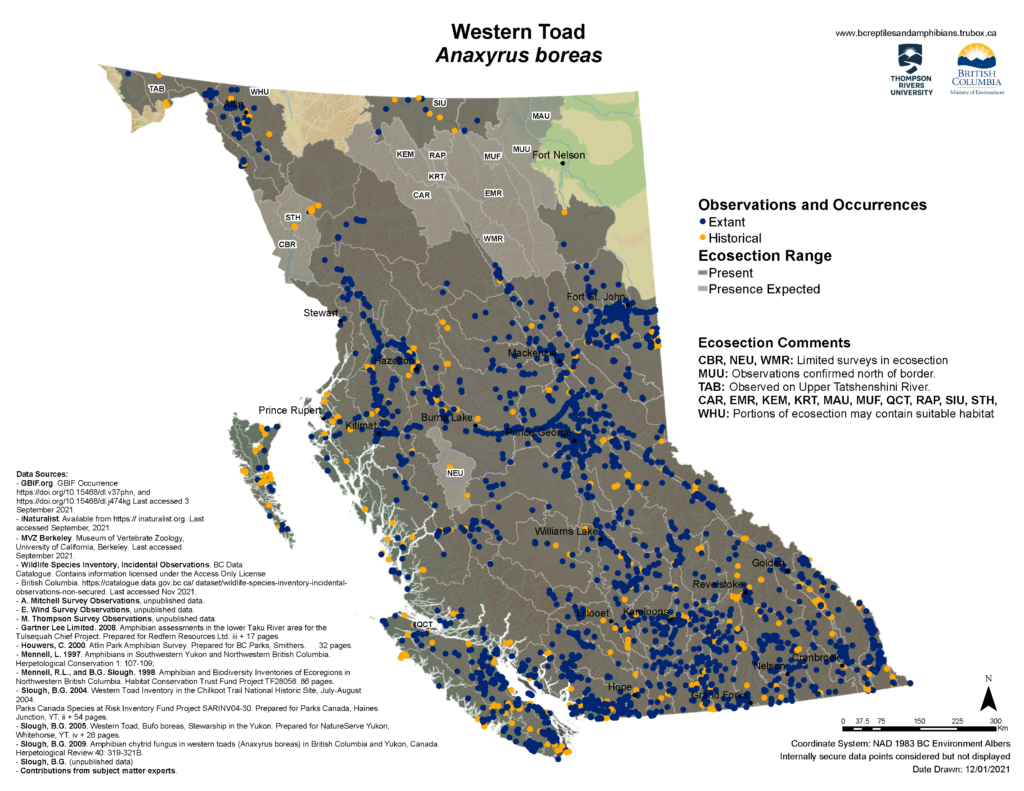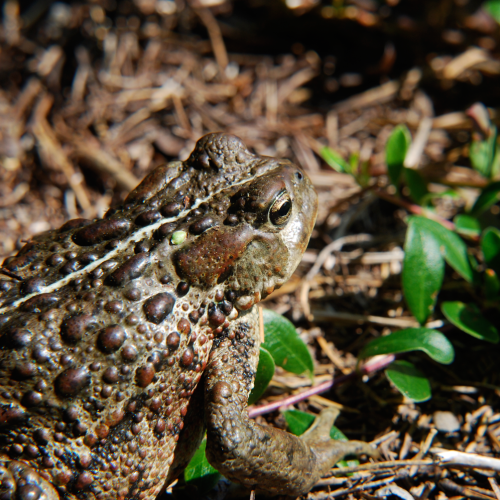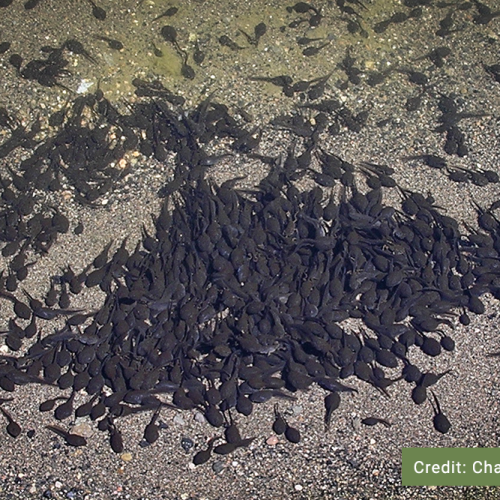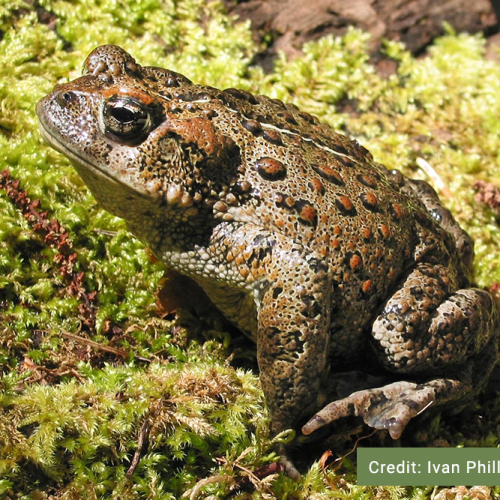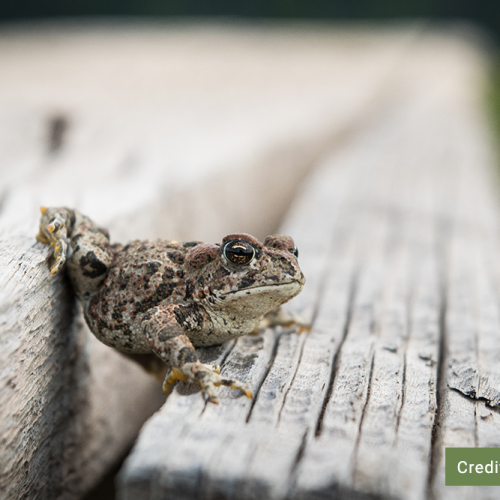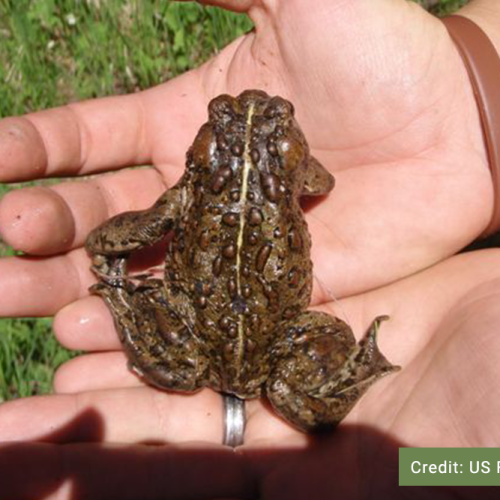Credit: Tab Tannery
Western Toad
Anaxyrus boreas
Description
Other names: Bufo boreas, Boreal Toad, Northwestern Toad
The Western Toad is a medium-large sized toad reaching up to 14.5 cm in length, with females growing larger than males. Characteristic of toads, it has dry, warty skin and relatively short limbs. There are prominent parotid glandsDefinition:An external skin gland on the back, neck, and/or shoulder of some toads, frogs, and salamanders, usually visible as a bump. It can secrete a number of milky alkaloid substances which help deter predators. behind the eyes that can expel a toxin when threatened. Western Toads lack cranial crests that are typical of other toad species in Canada. Western Toads are usually green or brown with a light strip down the middle of the back. The warts and parotid glands are often reddish and may be circled by black rings. The belly is a dull white with dark mottling. The eyes are gold-flecked and have distinctive horizontal oval pupils. Western Toad tadpoles have long tails with a large fin and are usually black with cloudy tails and no patterning. Tadpoles will grow up to 4 cm before metamorphosis.
Listen to the Indigenous words for “frog” here!
Western Toad Call
The breeding call of the Western Toad is a quiet peeping, like little chicken chicks.
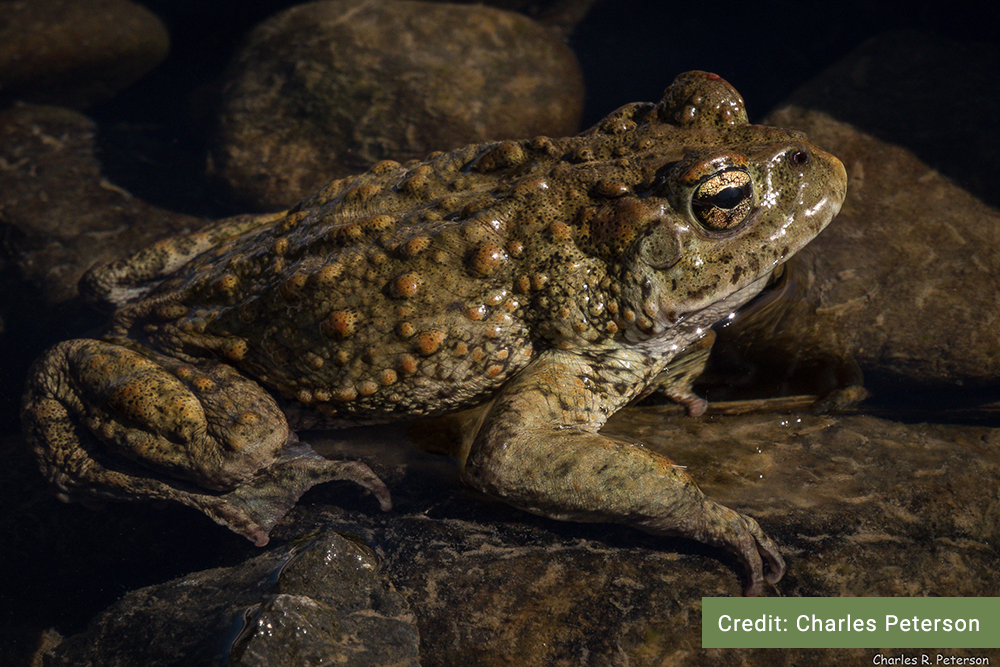
Western Toad Call
The breeding call of the Western Toad is a quiet peeping, like little chicken chicks.
Similar Species
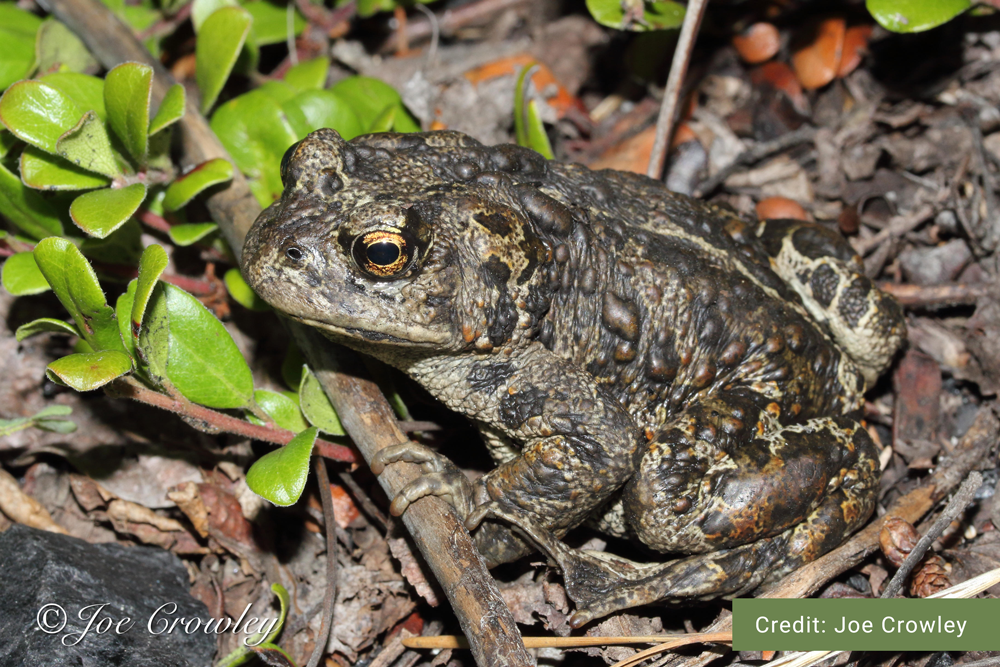
Western Toad
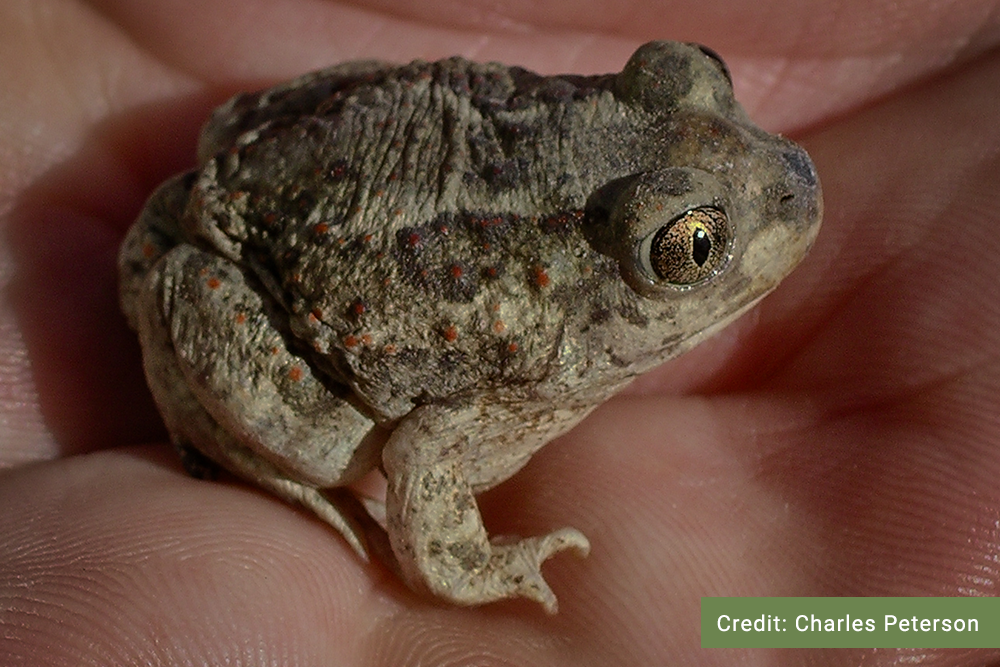
Great Basin Spadefoot
Distribution
Habitat
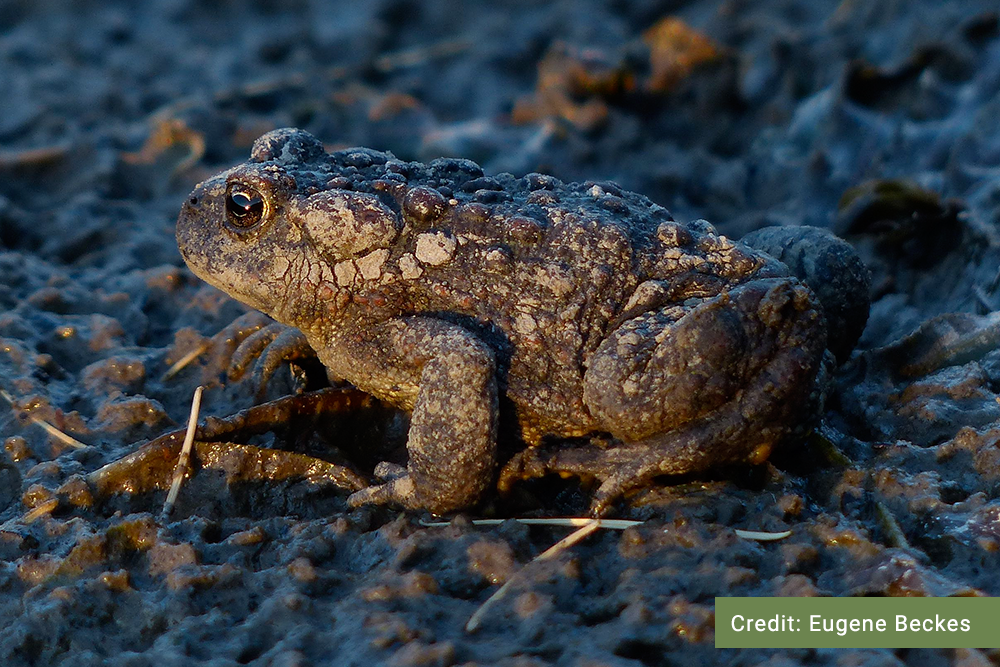
Reproduction
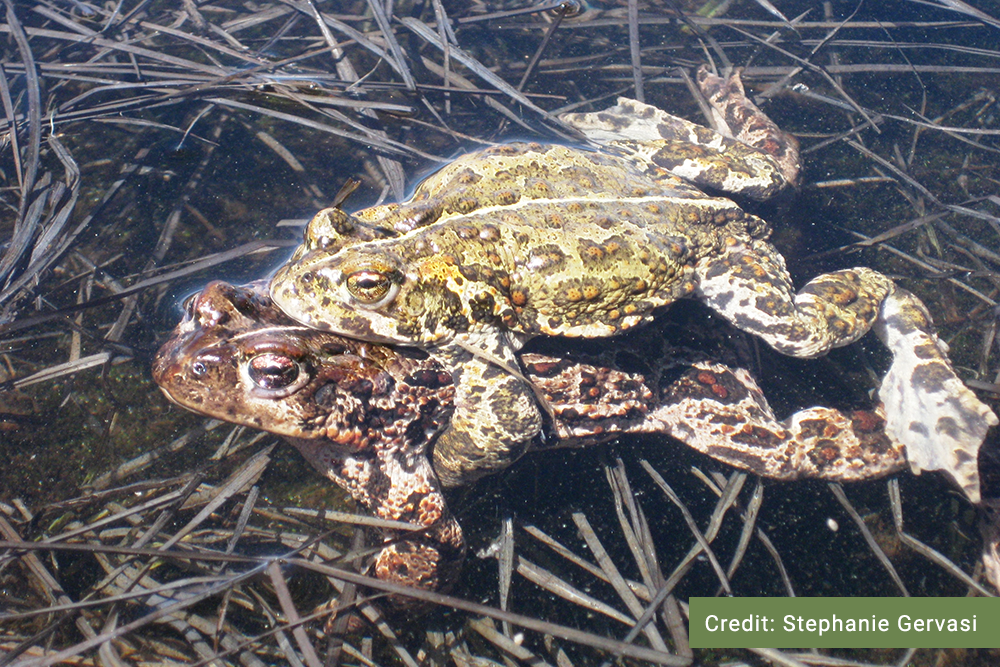
Diet
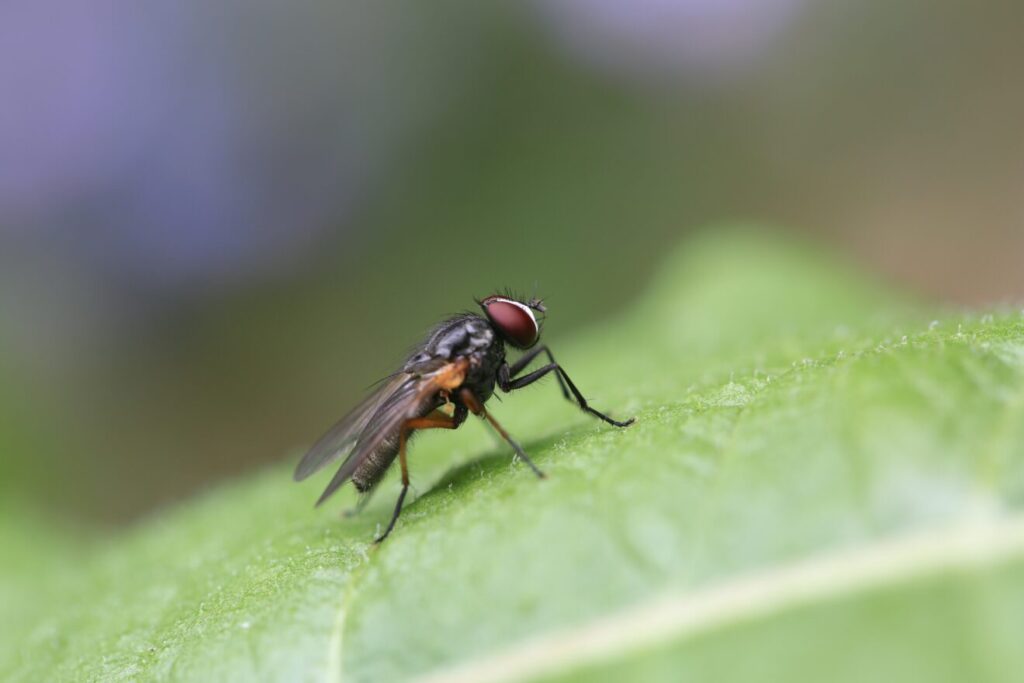
Conservation Status
Global: G4 (2008)
COSEWIC: SC
SARA:1-SC (2018)
Provincial: S4 (2016)
BC List: Yellow
Learn more about conservation status rankings here
Threats

Did You Know?
Fact #1
Fact #2
Fact #3
Species Account Author: Marcus Atkins
Available: https://a100.gov.bc.ca/pub/eswp/ (accessed May 26, 2021).
B.C. Conservation Data Centre. 2021. BC Species and Ecosystems Explorer. B.C. Minist. of Environ. Victoria, B.C. Available: https://a100.gov.bc.ca/pub/eswp/ (accessed May 26, 2021).
COSEWIC. 2012h. COSEWIC assessment and status report on the Western Toad Anaxyrus boreas in Canada. Committee on the Status of Endangered Wildlife in Canada. Ottawa. xiv + 71 pp.
Environment and Climate Change Canada. 2020c. Management Plan for the Western Toad (Anaxyrus boreas), Calling and Non-calling populations, in Canada. Species at Risk Act Management Plan Series. Environment and Climate Change Canada, Ottawa. v + 39 pp.
Govindarajulu et al. 2013. Batrachochytrium dendrobatidis surveillance in British Columbia 2008-2009, Canada. 5pp.
Matsuda, Brent, David M. Green, and Patrick T. Gregory. 2006. Amphibians and Reptiles of British Columbia. Handbook. Royal BC Museum, Victoria.
http://linnet.geog.ubc.ca/efauna/Atlas/Atlas.aspx?sciname=Anaxyrus%20boreas
http://canadianherpetology.ca/species/species_page.html?cname=Western%20Toad
http://a100.gov.bc.ca/pub/eirs/finishDownloadDocument.do?subdocumentId=1427
https://www.naturewatch.ca/frogwatch/borealwestern-toad/

